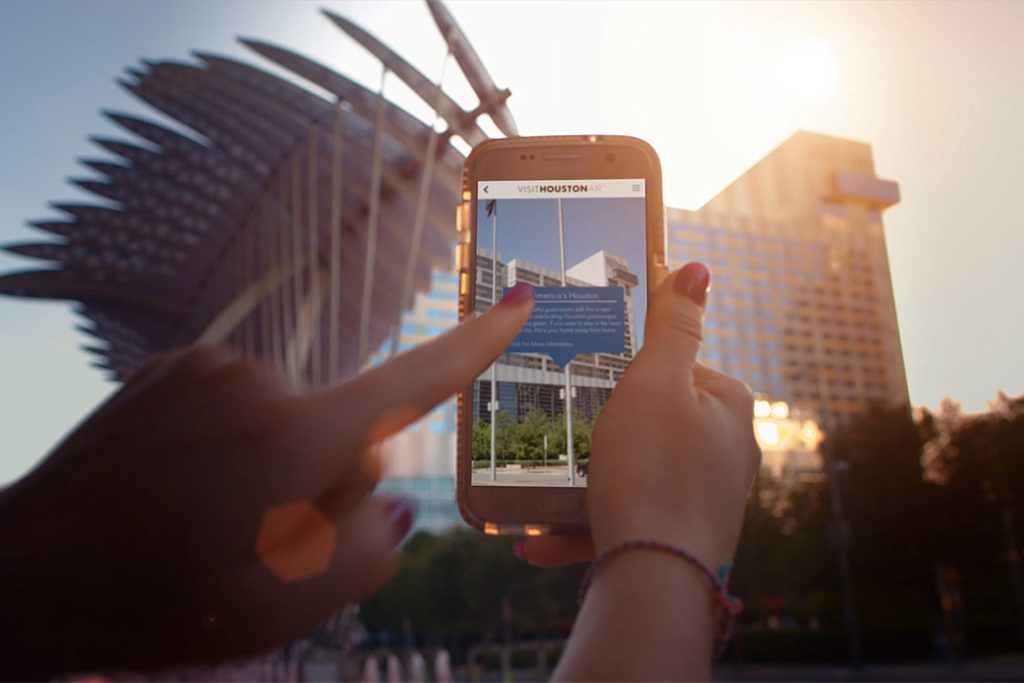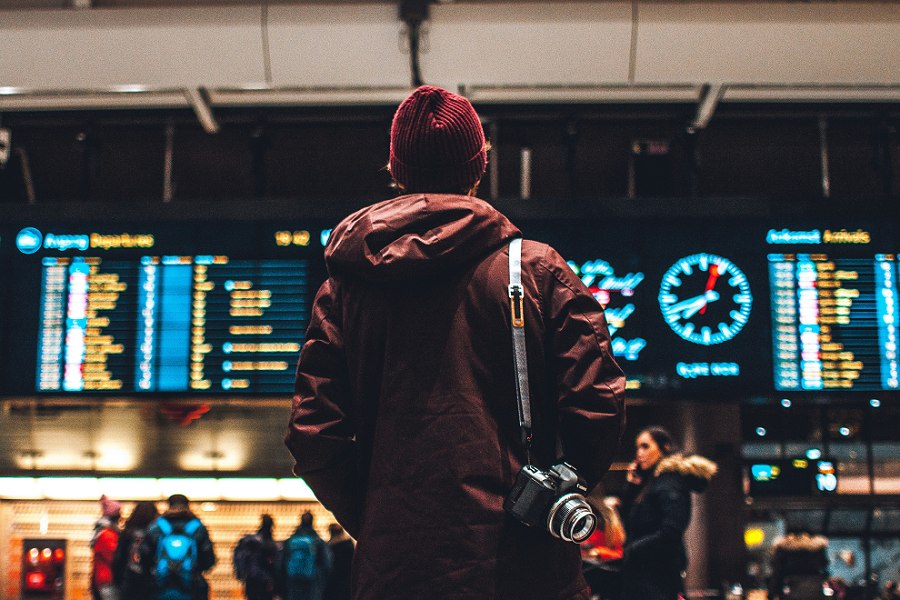How Houston Embraced Augmented Reality to Enhance the Visitor Experience

Skift Take
This sponsored content was created in collaboration with a Skift partner.
Many travelers look for any excuse to add the latest gadget or newest smartphone app to their daily routine. Tourism companies hoping to capitalize on this tech obsession have, in recent years, turned to augmented reality, wherein virtual objects are overlaid on real-world scenes observed through smartphone cameras, a la Pokémon Go.
A number of travel providers have used augmented reality to improve discrete aspects of a traveler’s experience. For example, KLM Royal Dutch Airlines has a mobile app feature that allows passengers to double-check baggage size, and The National Museum of Singapore and The Art Gallery of Ontario have both created AR-enhanced art installations. Meanwhile, Visit Houston has seized on the potential to harness augmented reality at the wider destination level.
At Houston First Corporation, which oversees technology development for Visit Houston and 10 other brands, director of web development Sean Herbert and chief marketing officer Holly Clapham Rosenow saw an opportunity to leverage augmented reality to help Houston spring to life for the city’s visitors. In 2018, the company launched Houston AR, an augmented reality app that makes exploring Houston more engaging. “We took all of the flat data from our content management system and created an immersive experience for locals and visitors,” said Herbert.
Here’s how it works: When a user opens the app and pans their smartphone’s camera over activated locations in the real world, they are presented with live wayfinding information about nearby restaurants, bars, and points of interest like museums, shopping venues, and other activities. Easy-to-follow directions to the locations are provided without leaving the app.
“Visitors are responding very positively,” said Herbert. “We’ve seen the number of unique users increase following a series of print and digital campaigns.”
On the Cutting Edge of Augmented Reality and Destination Experience Marketing
After the successful launch of the Houston AR app, Houston First began working on its next milestone: Integrating augmented reality into Visit Houston’s advertising campaigns. One of the benefits of using augmented reality in advertising is that the immersive, sensory-driven interactions can help build an emotional connection with consumers.
Houston First launched a national print campaign with augmented reality functionality in the Wall Street Journal in April 2019. "As far as we know, Houston was the first destination to deploy augmented reality in this way and the first-ever Wall Street Journal advertiser to do so," said Herbert.
The ads featured Houston’s dynamic mural walls, which are impressive in their own right, and highlighted the diverse culture and heritage of the city’s local communities. The ads came to life when users scanned them with the Houston AR app and were presented with a video or motion graphic in the digital space that was overlaid on the ad’s physical space.
“With so many beautiful works to choose from, we first wanted to focus on the murals that would best tell our story and strongly represent the city of Houston,” said Rosenow. “Ultimately, our city is a very welcoming place. Houston is a tapestry of cultures. We want to deliver an experience that’s just as lively and colorful as we are.”
Augmented reality experiences are now integrated into all of Visit Houston’s general consumer and meeting advertising campaigns.
What’s Next? Using Technology to Amplify Houston’s Major Attractions
In addition to viewing wayfinding information about nearby venues and immersive versions of local street art, users of the Houston AR app will soon be able to explore 360-degree views of major attractions in the city such as Space Center Houston and the Lone Star Flight Museum.
With this new feature, expected to launch in the Summer 2020, users will be able to move their device around to take in a panoramic view of these spaces as if they’re actually there. Houston First plans to improve this new software in the months and years to come, adding an ever-expanding treasury of fresh content and useful features, including remote ticket purchasing for Houston’s top attractions and integration with rideshare services like Uber and Lyft.
The development of this new technology coupled with its foray into augmented reality has helped Houston First move into yet another deployment of new technology that’s among the first of its kind for destination marketing organizations.
This content was created collaboratively by Houston First Corporation and Skift’s branded content studio, SkiftX.




